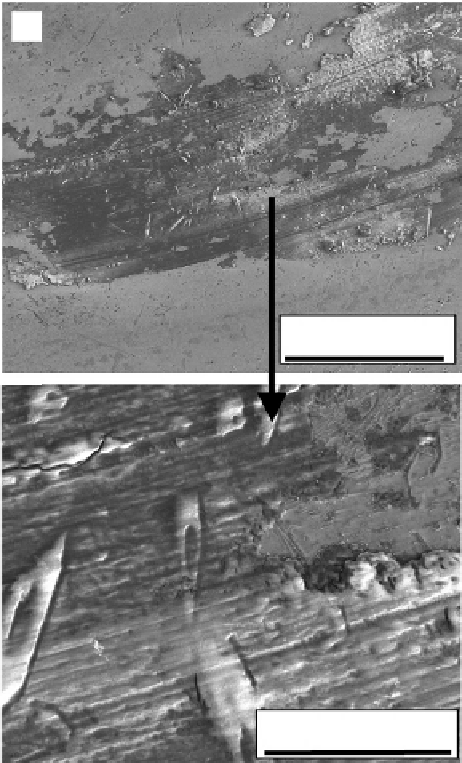Biomedical Engineering Reference
In-Depth Information
(a)
200
μ
m
(b)
20
μ
m
Figure 9.26.
Lower magnifi cation (a) and (b) higher magnifi cation secondary SEM images of
wear tracks on the surface of oxidized TNZT + 2B after friction studies using Si
3
N
4
counterface
balls. [Sonia Samuel et al.
Wear Resistance of Laser Deposited Boride
Reinforced Ti
-
Nb
-
Zr
-
Ta
Alloy Composites for Orthopedic Implants
(to appear in Mater. Sci. Eng. C, 2007)]
titanium oxide layers, like the rutile phase have been shown to be very effective
in lowering the friction coeffi cients (
0.2) and wear rates [45]. This narrowed the
wear tracks with no signifi cant third body debris formation that might result in
severe abrasive wear. Thus the titanium oxide layer acted as a lubricous oxide and
prevented boride particles from being potentially pulled out of the matrix,
and thereby improved the wear resistance considerably for both Ti-6Al-4V ELI
and TNZT + 2B. Lastly, there were no signifi cant differences in the wear track
morphologies between the alloys outside of some patchy regions in TNZT + 2B
that did not contribute to the overall friction behavior.
∼

Search WWH ::

Custom Search